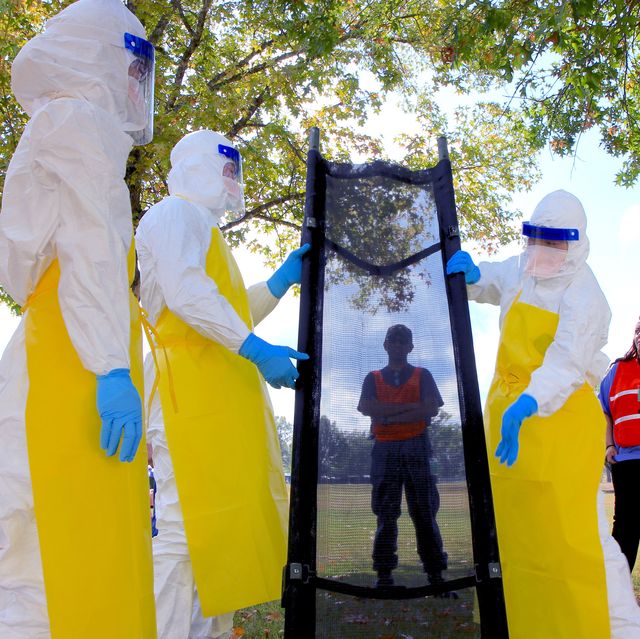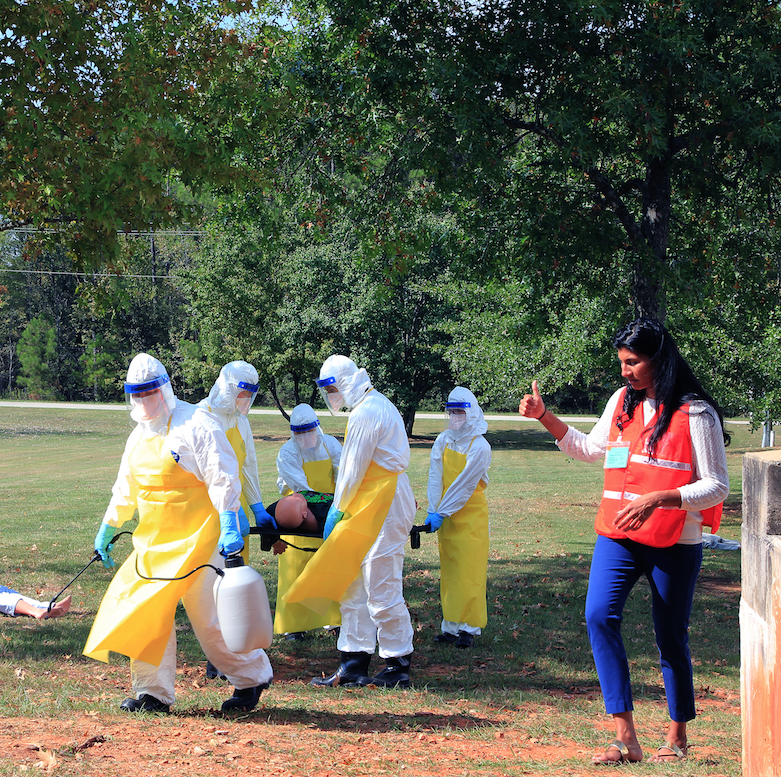If you were a Facebook friend of Dr. Daniel Pastula around 2014, you might have started to wish you’d gone to medical school. In one photo he posted, he was drinking a frozen cocktail on an island in Micronesia called Yap, where giant stones were once used as money. In another, he was wearing sunglasses on the beach in Fiji. At the time, Pastula was an officer in the Centers for Disease Control’s Epidemic Intelligence Service (EIS), a two-year training appointment often called the “disease detective program.” He was in Yap to investigate and manage an outbreak of the mosquito-borne virus chikungunya. In Fiji, it was dengue and Guillain-Barré.
The EIS program was started during the Cold War to create a group of people who could be quickly deployed to halt outbreaks such as those from, for example, biological weapons. When a health department requests urgent help from the CDC, at least one EIS officer and/or other subject-matter experts travel to the front line, whether it’s in Miami or Sierra Leone. Together with local health officials and clinicians, they determine whether there is a legitimate epidemic, create a list of cases, and put out a health advisory. Then they do what’s called descriptive epidemiology—graphing the who, what, where, and when of the cases involved. Then they try to figure out why.
One of the CDC’s most complicated recent mysteries struck a dozen kids who lived along the front range of the Rocky Mountains in late summer 2014. The children all came down with a cold, followed by weakness in their arms or legs. Some had a drooping face. It wasn’t polio, but it looked similar. The CDC put out a call: Was there anyone in the current EIS classes with a specialty in spinal cord lesions? There was.
Pastula, who is now an assistant professor of neurology, infectious diseases, and epidemiology at the University of Colorado School of Medicine and Colorado School of Public Health, packed a bag and drove down to Denver to meet the people who had been working with the sick children. Naming the new disease acute flaccid myelitis (AFM), the team started making histograms of when the disease had occurred (called epicurves), and maps of where.
One prevalent theory was that a respiratory virus that had been striking people around the same time, called enterovirus D68, was responsible for AFM. “It had some plausibility because enterovirus D68 is related to the poliovirus, although it hadn’t really been described to cause this,” says Pastula. But it was difficult to prove: You’d have to biopsy the children’s spinal cords, which could further damage them. The team collected samples of the fluid that surrounds the brain and spinal cord (cerebrospinal fluid) as a proxy measure, but they couldn’t consistently find any particular virus.
The outbreak abated naturally in late 2014, but has returned twice, in 2016 and 2018. Five years later, the CDC still doesn’t know what causes AFM, but they’re disinclined to give up. A lab at CDC Atlanta is currently using advanced genetic sequencing techniques to search for previously undetected viruses in the samples in advance of the next outbreak, expected in 2020. (Many think the two-year pattern has to do with herd immunity and when children who have been totally unexposed to the virus reach the age when infection is likely.) They’re also considering genetic and immunological factors that could explain why some children get AFM and others don’t.
“Epidemiology assumes two things,” says Pastula. “Diseases don’t happen at random, and there are risk factors that affect your chance of getting them.” Until AFM is solved, the CDC will be looking for those factors. You can find them on the front lines, washing the heck out of their hands.
What Is the Epidemic Intelligence Service?
A two-year training program for doctors, nurses, veterinarians, and certain categories of public-health researchers, the EIS exists so that the CDC can shift resources around the world whenever a disease threatens public health. People in the program undergo four weeks of lectures and training at CDC Atlanta, nicknamed epidemiology boot camp, and then can be deployed to locations around the world to investigate urgent outbreaks on the ground. There are 120 to 160 EIS officers at any time.
This article first appeared in the April 2019 issue.
Want more Popular Mechanics? Get Instant Access!














